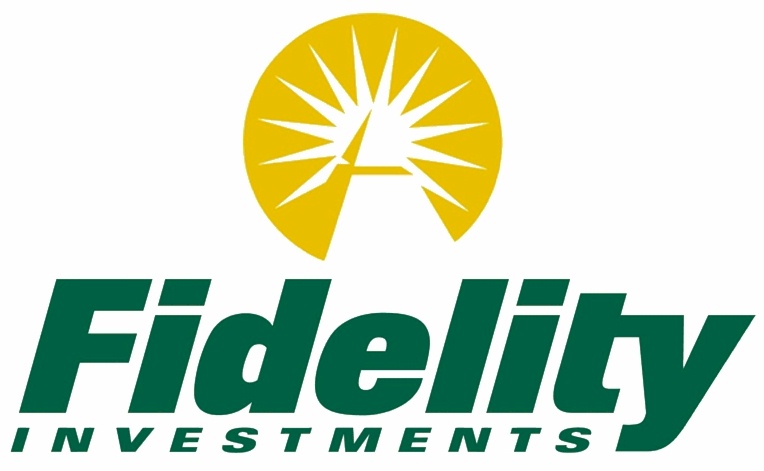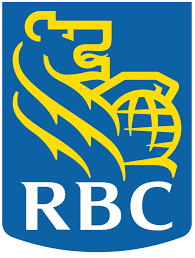If you are working with an advisor, they should frequently review your portfolio to make sure that it’s on track to meet your goals.
Another thing that your advisor should be doing is to periodically rebalance your portfolio so that it matches your risk tolerance.
A target-date fund automatically rebalances its portfolio with a targeted retirement date in mind (usually included in the name of the fund). This simplifies maintaining a portfolio over time, especially if not working with an advisor.
In early 2020, assets in target-date funds totalled roughly $1.9 trillion.
We’ll cover some of the best target-date funds in Canada, and discuss their features below.
Different Types of Target-Date Funds
While the fundamental premise of target-date funds remains the same – adjusting asset allocation based on proximity to the retirement year – not all target-date funds are created equal. Different fund providers might employ varying strategies, asset classes, and rebalancing methodologies.
- Static Glide Path vs. Dynamic Glide Path: Some funds stick to a predetermined asset allocation path (static), while others might adjust this path based on changing market conditions (dynamic).
- Asset Classes: Beyond the usual stocks and bonds, some target-date funds might include real estate, commodities, or even alternative investments.
- Costs: The expense ratios can differ significantly between target-date mutual funds and ETFs, as highlighted in the article with the comparison between Evermore’s ETFs and other mutual fund options.
- Underlying Investments: Some funds invest directly in stocks and bonds, while others invest in a collection of other mutual funds or ETFs.
- Management Style: Some funds are actively managed, with fund managers making investment decisions, while others follow a passive index-tracking strategy.
Best Target-Date Funds in Canada
1. Evermore Retirement ETFs

- Evermore Retirement 2025 ETF – NE: ERCV
- Evermore Retirement 2030 ETF – NE: ERDO
- Evermore Retirement 2035 ETF – NE: ERDV
- Evermore Retirement 2040 ETF – NE: EREO
- Evermore Retirement 2045 ETF – NE: EREV
- Evermore Retirement 2050 ETF – NE: ERFO
- Evermore Retirement 2055 ETF – NE: ERFV
- Evermore Retirement 2060 ETF – NE: ERGO
The Evermore Retirement ETFs are a suite of target-date funds that are listed here in Canada. They are the only Canadian target-date ETFs available in Canada, with a very recent launch date.
Evermore offers target-date funds for retirement dates with five-year retirement intervals, starting with 2025 and ending with 2060.
ETFs such as ERCV and ERDO which have a nearer retirement date can be expected to have a much higher allocation to fixed income than ERFV and ERGO.
All of the Evermore target-date ETFs are listed on the NEO exchange here in Canada. All of Evermore’s ETFs have a listing date of February 23, 2022, making the performance track record of each fund extremely short.
Evermore aims to keep the MER of their target-date ETFs at approximately 0.45%, which is substantially lower than target-date mutual funds options available in Canada.
In terms of assets, the Evermore target-date ETFs are incredibly small in size. Although this is likely due to the very recent inception of each fund, it does put the ETFs at risk of closing down early due to a lack of profitability.
Despite the recent inception date and low asset size, Evermore’s target-date funds are a great option to consider, with the choice of fund depending on your targeted retirement age.
2. Fidelity ClearPath Retirement Portfolios

- Fidelity ClearPath 2025
- Fidelity Clearpath 2030
- Fidelity ClearPath 2035
- Fidelity Clearpath 2040
- Fidelity ClearPath 2045
- Fidelity Clearpath 2050
- Fidelity ClearPath 2055
- Fidelity Clearpath 2060
The Fidelity ClearPath Retirement Portfolios are a suite of target-date mutual funds offered by Fidelity in Canada. Fidelity is a very large asset manager globally and has a strong presence within Canada.
Fidelity also offers target-date funds with five-year retirement intervals. The funds actually begin with 2005 as a retirement date, so we have only listed those which have a targeted retirement date that is in the future (2025 and onwards).
Like most target-date funds, portfolios with a closer targeted retirement date will have a higher allocation to fixed income. Target-date portfolios with a retirement date that is further ahead will have a higher allocation to equities.
As Fidelity’s target-date funds are all mutual funds, they do not trade on an exchange. If you are purchasing them without an advisor, the recommended fund class is F series, which comes with the lowest MER.
Despite F series’ lower MER, this is still over 1% for most of the ClearPath Portfolios. This is very high when compared to ETFs, and substantially higher than the MERs charged by Evermore.
The Fidelity ClearPath portfolios have been around for a while. Their funds with a 2025 and 2030 target retirement date have very long performance track records, while the 2060 target-date fund has a much shorter track record.
Fidelity’s target-date funds are all either large or massive in size. Fidelity has been very successful in positioning its target-date fund suite to Canadians.
Despite the significantly higher MER, Fidelity’s suite is great if you are an investor looking for a target-date fund with a long performance track record and with considerable assets under management.
3. RBC Retirement Portfolios

- RBC Retirement 2025 Portfolio
- RBC Retirement 2030 Portfolio
- RBC Retirement 2035 Portfolio
- RBC Retirement 2040 Portfolio
- RBC Retirement 2045 Portfolio
- RBC Retirement 2050 Portfolio
- RBC Retirement 2055 Portfolio
- RBC Retirement 2060 Portfolio
The RBC Retirement Portfolios are another suite of target-date mutual funds, this time offered by RBC Global Asset Management in Canada. RBC GAM is another dominant player in the Canadian investment space.
RBC GAM also offers target-date funds with five-year retirement intervals. The funds begin with 2020 as a retirement date, so we have again only listed those which have a future targeted retirement date.
Portfolios with a further out retirement date will have a higher allocation to equities and vice versa.
RBC GAM’s target-date funds are also all mutual funds and don’t trade on an exchange. If you are not using an advisor, we again recommend the F series for your personal accounts.
RBC’s target-date funds all come with an MER between 0.80% and 0.90%. While this is a lot higher than Evermore’s target-date ETFs, RBC’s target-date mutual funds are considerably cheaper than Fidelity’s.
The RBC retirement portfolios with a nearer target date have a long performance track record, while the ones targeting a date further out have a more recent inception date.
The target-date funds from RBC are all decently sized in terms of assets. They are considerably smaller than Fidelity’s lineup and much larger than Evermore’s. These funds are not small enough to put them at risk of closing down early.
If you are looking for target-date funds that are well-established and come at a lower MER than Fidelity’s lineup, RBC GAM’s retirement portfolios are great to consider.
4. PH&N LifeTime Funds

- PH&N LifeTime 2025 Fund
- PH&N LifeTime 2030 Fund
- PH&N LifeTime 2035 Fund
- PH&N LifeTime 2040 Fund
- PH&N LifeTime 2045 Fund
- PH&N LifeTime 2050 Fund
- PH&N LifeTime 2055 Fund
- PH&N LifeTime 2060 Fund
The last suite of target-date funds in Canada on our list is offered by Phillips, Hager & North, or PH&N. PH&N was bought out by RBC some time ago and operates as a subsidiary of the bank.
PH&N’s target-date funds are also offered in five-year retirement intervals. The funds begin with 2015 as a retirement date. We have again only listed those which have a future targeted retirement date.
Funds with a further out retirement date will have a higher allocation to equities and vice versa.
PH&N’s target-date funds are also again all mutual funds that don’t trade on an exchange. We recommend the F series of the funds if you are not using an advisor.
PH&N’s target-date funds come with an MER between 0.70% and 1.20%, with further maturities having a higher MER. This is a lot higher than Evermore’s target-date ETFs and most of RBC GAM’s target-date funds.
All of the target-date funds from PH&N have a relatively short performance track record. In terms of assets, they are roughly the same size as RBC GAM’s target-date funds – smaller than Fidelity’s but significantly larger than Evermore’s.
PH&N is a well-known name in the investment space in Canada, and their target-date funds are a great option to consider if you are considering investing in this space.
How do I determine which target-date fund is right for me?
Choosing the right target-date fund depends on several factors, primarily your intended retirement year. Start by identifying the year you plan to retire, and look for a fund that closely matches that year.
Beyond the retirement year, consider the fund’s asset allocation strategy; some might be more aggressive or conservative than others. Examine the glide path – the manner in which the fund adjusts its asset allocation over time.
Costs, such as the expense ratio, are crucial as they can significantly impact returns over the long term. Lastly, consider the fund’s performance history, though past performance is not always indicative of future results.
Are target-date funds a safe investment option for retirement planning?
Target-date funds are designed to simplify retirement planning by automatically adjusting asset allocation based on an individual’s age and the number of years left until retirement. Their primary goal is to maximize returns while mitigating risks as one nears retirement.
However, like all investments, target-date funds carry inherent risks. The fund’s performance is subject to market fluctuations, and there’s no guarantee that it will achieve its objectives or that any single fund will be sufficient for your retirement needs.
The safety of a target-date fund also depends on its asset allocation, management strategy, and the overall market environment.
Conclusion
If you are looking for a one-ticket solution to invest in, which will automatically rebalance over time to match your desired retirement age, target-date funds are great to consider.
Although Evermore is the only low-cost target-date ETF provider currently in Canada, several great options exist on the mutual fund side.
Key considerations aside from just your retirement age are important to keep in mind when you are investing.
Make sure to consider any short-term goals, as well as your risk tolerance before starting to invest in any fund or ETF.
See this list of the best all-in-one ETFs in Canada for some other excellent options.

